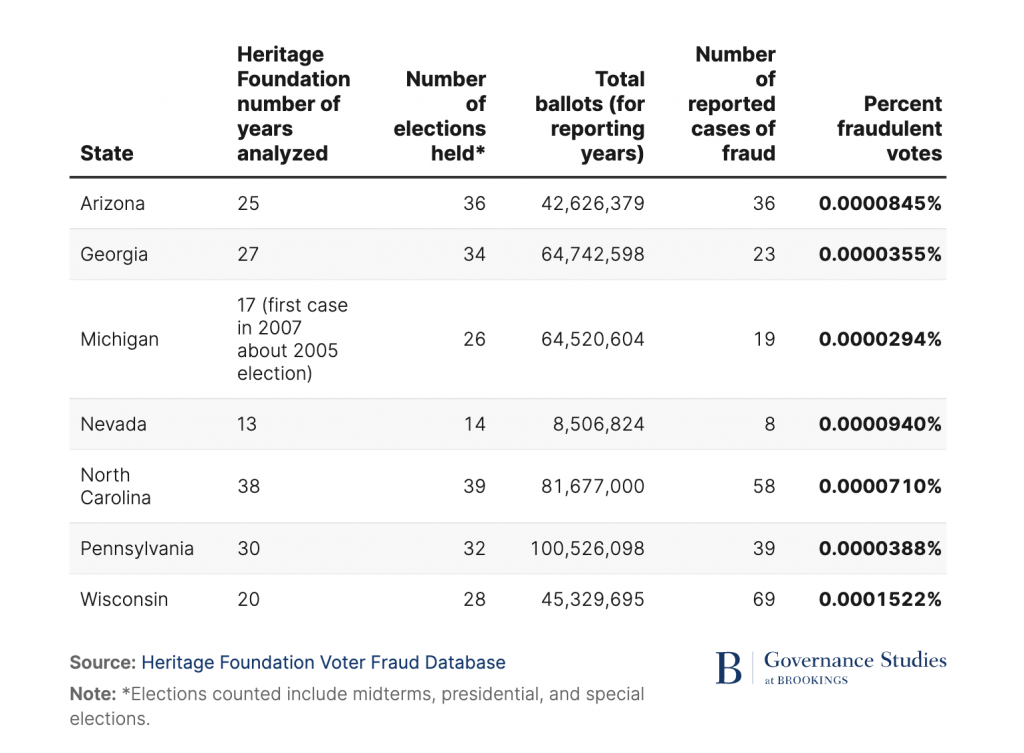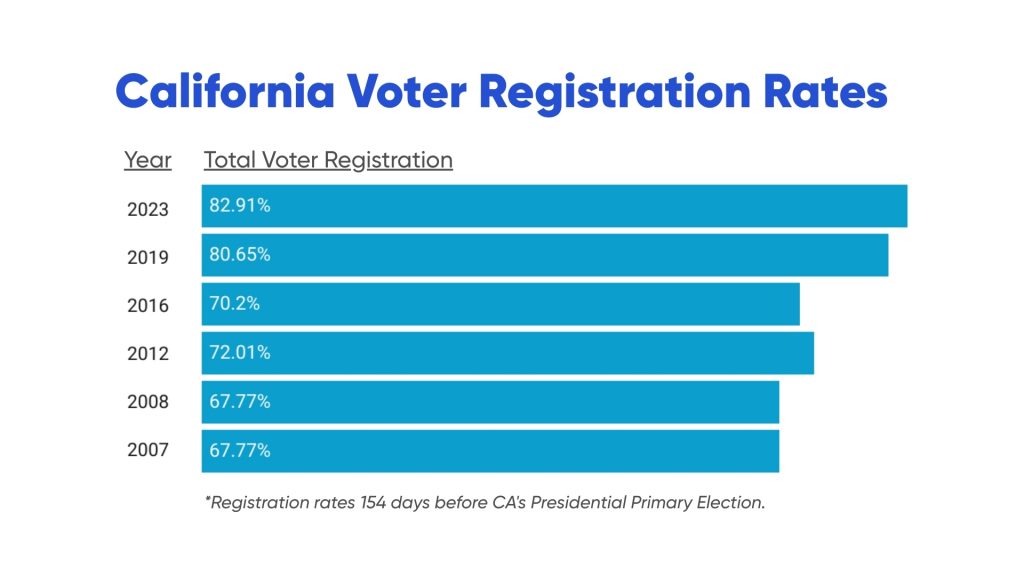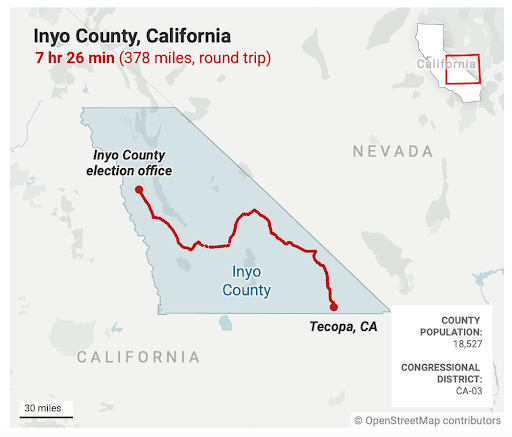
Let’s Talk… Voter Suppression
How the “Safeguard” American Voter Eligibility (SAVE) Act Would Block Millions of Californians from Voting
March 1o, 2025
For the last 15 years, voter registration rates in California have steadily increased from 68% in 2007 to 83% in 2023, according to the California Secretary of State’s office. This surge in voter registration is a testament to the outreach efforts of community partners, new online platforms that make it easier to register, and a series of state-level pro-voter reforms – most notably, the semi-automatic registration program through the Department of Motor Vehicles (DMV).
But if the SAVE Act passes Congress, it will become a lot harder to register to vote, undoing all the hard work and progress made to bring more Californians from all walks of life onto our voter rolls.
So What Is The SAVE Act?
Representative Chip Roy (TX-21) re-introduced the Safeguard American Voter Eligibility (SAVE) Act this year, after it failed to advance last year under a divided Congress. The SAVE Act radically changes the voter registration process in the name of combating voter fraud (more on that below).
Here’s what the SAVE Act actually does:
- It requires in-person registration with proof of citizenship documents. The required documents would need to be presented in person for a person to vote in federal elections:
-
- U.S. passport – OR –
- U.S. birth certificate in addition to government photo ID (or in place of U.S. birth certificate, the following documents could be used: naturalization certificate, hospital record of birth, Consular Report of Birth Abroad, final adoption decree or an American Indian Card issued by the Department of Homeland Security)
- Military ID card with a United States military record of service showing that the place of birth was in the United States.
REAL ID or a standard Driver’s License are not sufficient because they do not indicate citizenship, as required under the legislation.
It’s important to bear in mind that current federal law already requires people registering to vote to attest that they are U.S. citizens under penalty of perjury. Furthermore, under existing federal law, voter registration applications must ask for either a valid driver’s license number (or state-issued photo ID), or the last four digits of a Social Security number. If a person fails to provide this information on their application or the person cannot be matched to a state database, they must provide documentation to establish current residency or identity. Non-citizens who registered to vote — even unintentionally — are subject to serious legal consequences and deportation.
- It imposes new voter roll purges. The bill mandates voter roll audits using federal and state databases to identify non-citizens. This sounds reasonable, right? But the catch is that these audits would be done without any safeguards to ensure that the purges were limited to non-citizens. Voter roll audits often get it wrong, erroneously flagging people for potential removal when their eligibility is ambiguous or may have changed due to naturalization. As the Brennan Center for Justice notes:
“We know that overbroad purges of supposed noncitizens would ensnare eligible American voters because they already have. Examples abound from 2024 alone. Alabama attempted a purge of 3,251 people suspected of being noncitizens, but litigation revealed that the list included at least 2,000 eligible American voters. A federal district court stopped this faulty and unlawful purge.”
With this in mind, it’s critical that individuals flagged for removal be notified in advance and provided sufficient time to establish their voter eligibility. However, the SAVE Act does not require any such notification, setting the stage for the removal of thousands of eligible Americans — if not more — from the voter rolls without them even knowing it.
- It opens up election officials to greater legal jeopardy for honest mistakes. Election officials could face criminal charges if they accept or process voter registration applications without proof of citizenship, even in cases of administrative error. Under the SAVE Act, private citizens also can sue election officials if they suspect they are not following the law. Unfounded paranoia about election fraud has already made election officials the target of harassment in recent years and providing an avenue for citizen lawsuits will only ramp up the climate of fear in which many election officials operate.
How Common Is Voter Fraud?
Since the debacle of the 2000 presidential election, concerns over voter fraud have been steadily on the rise, kicking into overdrive with President Trump’s 2020 unfounded claims that the election was stolen. But there is no evidence to support these claims. As the Brookings Institution points out, even research conducted by the conservative Heritage Foundation (responsible for Project 2025) shows the negligible incidence of voter fraud in the United States:
“Looking at the seven closest states, we find for instance that in Arizona, Heritage had to go back 25 years, over which there were 36 elections held and 42,626,379 ballots cast, in order to come up with 36 cases of fraud. The percentage of fraudulent votes was a minuscule 0.0000845%, and no election outcome was altered by ballot fraud throughout that time period. In the highly contested state of Pennsylvania, Heritage data goes back 30 years and covers 32 elections with over 100 million votes cast and found only 39 cases of voter fraud.”
It’s no surprise that voter fraud is rare in the United States because:
- There are more efficient and legal ways to influence modern election outcomes (primarily through big money spending on marketing and ads); and
- The threat of deportation is a strong deterrent for non-citizens.
What Would The Impact Be?
The SAVE Act would completely upend how California — and other states — currently handle voter registration, undoing decades of reforms to move us toward a more inclusive and robust democracy. The likely result would be a dramatically smaller and less representative electorate — skewing even more older, whiter, and affluent.
The SAVE Act would eliminate or severely curtail the main avenues for voter registration in California. At the moment, the vast majority of new voter registrations in California occur at the Department of Motor Vehicles (DMV) when a customer is presented with a screen asking if they would like to register to vote during a normal transaction. This semi-automatic voter registration system implemented in 2018 as part of the California New Motor Voter Program has made it even more convenient for eligible citizens to register to vote or update their information. Under the SAVE Act, the DMV’s semi-automatic voter registration system would register only a fraction of the number of individuals it does today — and similarly limit the number of people updating their voter information — since many people do not bring citizenship documents to the DMV for their normal transactions.
California also allows eligible residents to register to vote online with a Driver’s License or state-issued ID; via a paper registration form that can be returned by mail; or in person at a designated election site. The SAVE Act would eliminate online voter registration and citizen-led voter registration drives due to the requirement to present citizenship documents to election officials in person.
The requirement to both register in person and provide citizenship documentation presents significant hurdles for many eligible voters. Below we look at who would be most impacted by these changes.
Who might not have qualifying documents? Almost one in ten American citizens of voting age lack ready access to the necessary documents proving citizenship, according to a 2024 survey conducted by the Brennan Center for Justice. This translates to roughly 2.3 million eligible Californians who would need to obtain documents. In some cases, these individuals might have the right documents but they are not on hand — either in a safety deposit box or at their parents’ home or another residence. ¹ It’s very likely that this back-of-the-envelope estimate for the number of eligible Californians impacted is an underestimate, given California’s sizable populations of Latinos, and foreign-born citizens, who are less likely to possess these documents according to past surveys.
We know that the proposed SAVE Act requirements would disproportionately impact African Americans and Latinos, young people, the elderly and low-income individuals — all of whom are less likely to possess valid government-issued photo ID according to past surveys. In addition, a third of women do not have ready access to citizenship documents that reflect their changed last name, according to a 2006 survey from the Brennan Center for Justice.
Who else would be negatively impacted? The requirement to register in person also presents a substantial burden on rural voters in particular — but also low-income voters who rely on public transit — who would need to commit hours in some cases to travel to a designated election site. In Inyo County, some eligible voters might have to make a 7.5 hour round trip spanning 378 miles, and in San Bernardino County, the round trip could take as long as 5 hours, according to analysis from the Center for American Progress.
The Take-Away
Even though voter fraud in the United States has been exceedingly rare in recent decades, election security should always be a top priority. However, attempts to strengthen the integrity and security of our elections must not come at the cost of eroding democratic participation. And in the case of the SAVE Act, little is achieved toward election integrity and much is sacrificed. We can expect millions of eligible Americans — especially from historically underrepresented groups — to be excluded from the voter rolls if the SAVE Act becomes law.
Our partner the Institute for Responsive Government has suggested two better ways to improve the accuracy of our voter rolls without excluding millions of eligible voters from our democracy:
- Expand state access to federal databases for electronic verification of citizenship status (with sufficient notification and procedures for submitting additional documentation when a match cannot be made); and
- More robust federal funding to support state and local election officials in voter roll maintenance.
One person one vote is the core principle of American democracy. As one of our Founding Fathers, Thomas Jefferson, once wrote: “The influence over government must be shared among all the people.” Americans should not need to jump through hoops to exercise their right to vote. Instead, it should be government’s responsibility — as it is in many advanced democracies — to register all eligible voters. NextGen has fought to move California more in that direction through the adoption of a secure, fully automatic voter registration system to address the 4.7 million eligible Californians missing from our voter rolls (SB 299 which was vetoed by Governor Newsom last year). Unfortunately, instead of moving California and the country closer to the goal of universal registration and participation, the SAVE Act would roll back decades of progress and balloon the number of eligible Americans unable to participate in our democracy.
What You Can Do
Congress needs to hear from you. Call your Senators and Member of Congress to express your concerns about the SAVE Act. You can use this handy look-up tool from our partner Common Cause to find the phone numbers for your representatives. Together, we can “safeguard” our democracy from ill-conceived legislation that undermines democratic participation.
Thanks for reading,
Amy Hamblin
¹ A national survey by the Brennan Center for Justice estimated that 9% of American citizens of voting age do not have ready access to citizenship documents. According to the U.S. Census Bureau’s 2019-2023 5-Year American Community Survey, California’s citizen voting age population (CVAP) is 26,040,825. We calculated that 9% of California’s CVAP would be 2.3 million impacted individuals.



